Fiat Tipo Wagon vs Kia EV6 – Differences & prices compared
Compare performance, boot space, consumption and price in one view.
Find out now: which car is the better choice for you – Fiat Tipo Wagon or Kia EV6?
The Fiat Tipo Wagon (Estate) comes with a Petrol MHEV or Diesel engine and Automatic or Manuel transmission. In comparison, the Kia EV6 (SUV) features a Electric engine with Automatic transmission.
When it comes to boot capacity, the Fiat Tipo Wagon offers 550 L, while the Kia EV6 provides 490 L – depending on how much space you need. If you’re looking for more power, decide whether the 130 HP of the Fiat Tipo Wagon or the 609 HP of the Kia EV6 suits your needs better.
In terms of consumption, the values are 4.70 L per 100 km for the Fiat Tipo Wagon, and 15.90 kWh for the Kia EV6.
Price-wise, the Fiat Tipo Wagon starts at 21000 £, while the Kia EV6 is available from 38600 £. Compare all the details and find out which model fits your lifestyle best!
Fiat Tipo Wagon
The Fiat Tipo Station Wagon offers a spacious and practical solution for families seeking value without sacrificing comfort. Its sleek design and modern interior features create a pleasant driving experience, complemented by a range of user-friendly technology. On the road, the Tipo Estate provides a smooth drive, making it an ideal companion for both urban and longer journeys.
details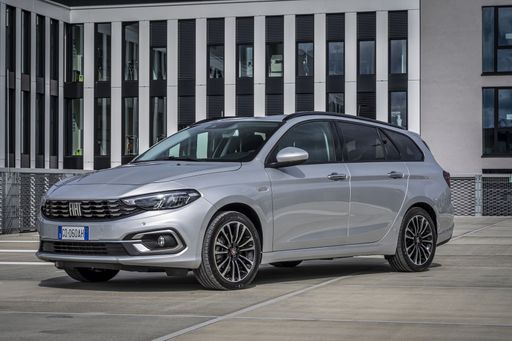 @ media.stellantis.com
@ media.stellantis.com
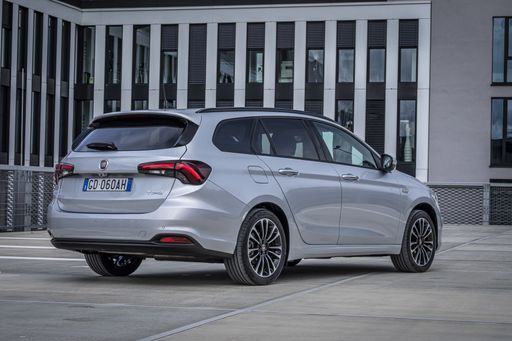 @ media.stellantis.com
@ media.stellantis.com
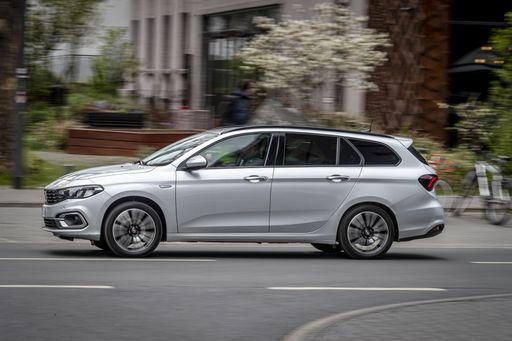 @ media.stellantis.com
@ media.stellantis.com
Kia EV6
The Kia EV6 is an impressive contender in the electric vehicle market, blending futuristic design with sustainable driving. Its sleek exterior combined with a spacious and tech-savvy interior provides both style and comfort for modern drivers. With a focus on performance, the EV6 delivers an exhilarating driving experience while maintaining an eco-friendly footprint.
details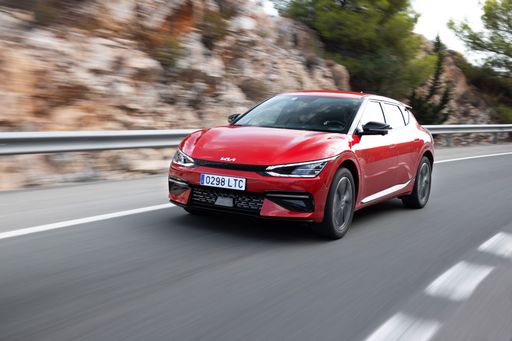 @ press.kia.com
@ press.kia.com
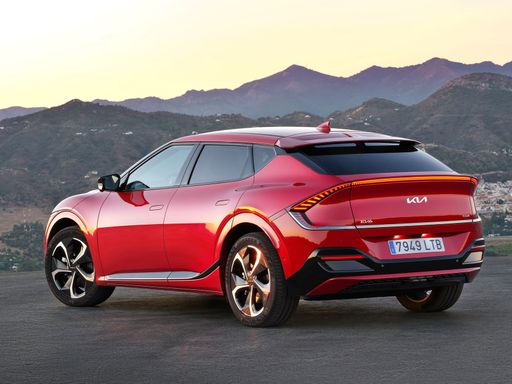 @ press.kia.com
@ press.kia.com
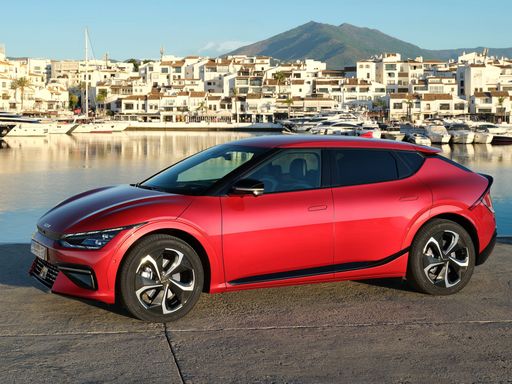 @ press.kia.com
@ press.kia.com
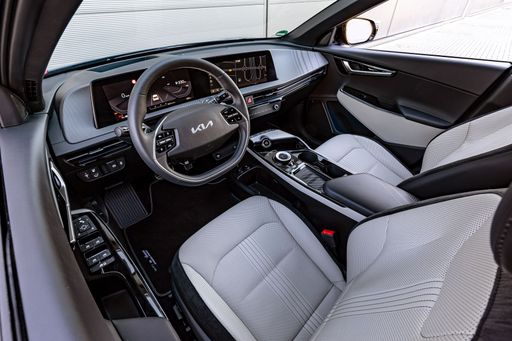 @ press.kia.com
@ press.kia.com
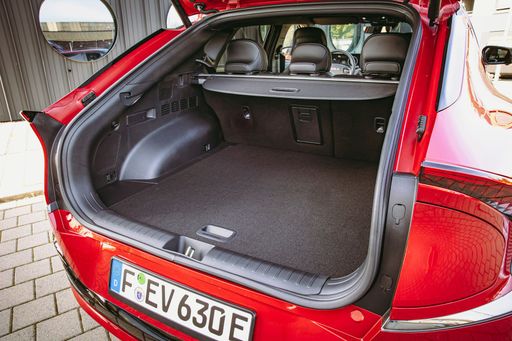 @ press.kia.com
@ press.kia.com

|

|
|
|
|
Costs and Consumption |
|
|---|---|
|
Price
21000 - 27000 £
|
Price
38600 - 60000 £
|
|
Consumption L/100km
4.7 - 5.4 L
|
Consumption L/100km
-
|
|
Consumption kWh/100km
-
|
Consumption kWh/100km
15.9 - 20.9 kWh
|
|
Electric Range
-
|
Electric Range
428 - 582 km
|
|
Battery Capacity
-
|
Battery Capacity
63 - 84 kWh
|
|
co2
122 - 125 g/km
|
co2
0 g/km
|
|
Fuel tank capacity
50 L
|
Fuel tank capacity
-
|
Dimensions and Body |
|
|---|---|
|
Body Type
Estate
|
Body Type
SUV
|
|
Seats
5
|
Seats
5
|
|
Doors
5
|
Doors
5
|
|
Curb weight
1455 - 1470 kg
|
Curb weight
1955 - 2220 kg
|
|
Trunk capacity
550 L
|
Trunk capacity
480 - 490 L
|
|
Length
4571 mm
|
Length
4695 mm
|
|
Width
1792 mm
|
Width
1880 - 1890 mm
|
|
Height
1514 mm
|
Height
1545 - 1550 mm
|
|
Payload
475 kg
|
Payload
440 - 450 kg
|
Engine and Performance |
|
|---|---|
|
Engine Type
Petrol MHEV, Diesel
|
Engine Type
Electric
|
|
Transmission
Automatic, Manuel
|
Transmission
Automatic
|
|
Transmission Detail
Dual-Clutch Automatic, Manual Gearbox
|
Transmission Detail
Reduction Gearbox
|
|
Drive Type
Front-Wheel Drive
|
Drive Type
Rear-Wheel Drive, All-Wheel Drive
|
|
Power HP
130 HP
|
Power HP
170 - 609 HP
|
|
Acceleration 0-100km/h
9.1 - 10.1 s
|
Acceleration 0-100km/h
3.5 - 8.7 s
|
|
Max Speed
206 - 207 km/h
|
Max Speed
185 - 260 km/h
|
|
Torque
240 - 320 Nm
|
Torque
350 - 770 Nm
|
|
Number of Cylinders
4
|
Number of Cylinders
-
|
|
Power kW
96 kW
|
Power kW
125 - 448 kW
|
|
Engine capacity
1469 - 1598 cm3
|
Engine capacity
-
|
General |
|
|---|---|
|
Model Year
2024
|
Model Year
2024 - 2025
|
|
CO2 Efficiency Class
D
|
CO2 Efficiency Class
A
|
|
Brand
Fiat
|
Brand
Kia
|
Fiat Tipo Wagon
Introduction to the Fiat Tipo Station Wagon
The Fiat Tipo Station Wagon has long been a staple in the automotive world, celebrated for its practical design, spacious interior, and affordability. The 2024 model continues this tradition, offering impressive updates in technology and performance, making it a significant contender in the compact estate car market. Here, we take a closer look at what makes the Fiat Tipo Kombi a standout choice.
Engine and Performance
Under the bonnet, the Fiat Tipo Station Wagon showcases its versatility with a choice of powertrains. Its offerings include a 1.5 GSE Hybrid with a mild-hybrid system that enhances fuel efficiency and provides a responsive driving experience. This engine choice delivers 130 PS and achieves a commendable fuel consumption rate of 5.4 L/100km.
For diesel enthusiasts, the 1.6 MultiJet engine provides a robust performance with the same 130 PS but boasts an even lower fuel consumption of 4.7 L/100km. Both engine variants offer a front-wheel drive system which is complemented by either a dual-clutch automatic transmission or a traditional manual gearbox, ensuring a pleasurable driving experience tailored to individual preferences.
Advanced Technology and Innovations
The 2024 Fiat Tipo Station Wagon is equipped with a suite of modern technologies, enhancing both safety and convenience. The model features an advanced infotainment system that integrates seamlessly with smartphones, offering navigation, media, and communication tools via a sleek and intuitive touchscreen interface.
On the safety front, the Tipo Station Wagon is equipped with various driver assistance systems, including adaptive cruise control and lane-keeping assist, ensuring both comfort and security on the road. These innovations reflect Fiat's commitment to merging safety with cutting-edge technology.
Design and Comfort
From a design perspective, the Fiat Tipo Station Wagon maintains a sleek and modern aesthetic, characterised by clean lines and a distinctive front grille that conveys confidence. The vehicle's dimensions (4571 mm in length, 1792 mm in width, and 1514 mm in height) provide ample space for passengers and gear, while a generous boot offers 550 litres of cargo capacity.
Inside, the Tipo Station Wagon is designed with comfort in mind, accommodating five passengers comfortably. The interior cabin is spacious, with quality materials and ergonomic seating ensuring that long journeys are undertaken in comfort.
Efficiency and Environmental Considerations
Efficiency is at the core of the Fiat Tipo Station Wagons design, as evidenced by its low fuel consumption figures and CO2 emissions ranging between 122 and 125 g/km, securing a CO2 efficiency class of D. This makes the vehicle an environmentally conscious choice without sacrificing performance or convenience.
Conclusion
For those in search of a reliable, spacious, and technologically advanced vehicle, the Fiat Tipo Station Wagon stands out as an excellent option. Its combination of performance, efficiency, and modern technology, all wrapped in a stylish design, ensures that it remains a top choice for 2024 and beyond.
Kia EV6
Discovering the Kia EV6: A Leap into the Future of Electric Mobility
The Kia EV6 is a remarkable embodiment of innovation and sophistication in the world of electric vehicles. As a groundbreaking addition to Kia's lineup, the EV6 challenges the norms of electric driving with its exceptional engineering and forward-thinking design. This model offers an exciting blend of cutting-edge technology, robust performance, and sustainable mobility, marking it as a standout choice in the competitive electric vehicle market.
Power and Performance: A Dynamic Driving Experience
Under the hood, the Kia EV6 boasts a variety of powertrains tailored to different driving preferences. The EV6 is available in several versions, each with its unique specifications. The entry-level model comes equipped with a 63 kWh battery, delivering 170 HP and an impressive range of 428 km. For those seeking more power, there is an 84 kWh option with 229 HP, extending the range to an impressive 582 km. The most powerful variant features an all-wheel drive system with 325 HP, ensuring a thrilling drive with a range of 546 km.
Technical Brilliance: Efficiency and Speed
Kia's dedication to efficiency is evident in the EV6, with energy consumption figures as low as 15.9 kWh/100 km. This electric vehicle speeds from 0 to 100 km/h in as little as 5.3 seconds, depending on the model, which is a testament to its superior performance engineering. Its top speeds reach up to 188 km/h, allowing for both performance and practicality in everyday driving.
Design and Comfort: A New Standard in Electric Vehicles
The EV6's design merges functionality with aesthetics, resulting in a sleek and aerodynamic SUV body type. With a length of 4695 mm and a cargo capacity of 490 liters, it offers ample space for both passengers and luggage. Inside, the EV6 comfortably seats up to five occupants, combining premium materials with high-tech features to provide an unparalleled comfort experience. Various trim levels, such as Air, Earth, and GT Line, add a personalized touch to match the driver's style and preferences.
Innovations in Sustainability
At the heart of the Kia EV6's appeal is its commitment to sustainability. As an all-electric vehicle, the EV6 produces zero CO2 emissions, earning it an A-class efficiency rating. With a payload capacity of up to 450 kg and a curb weight that varies between 1955 and 2150 kg, it manages to balance durability and eco-friendliness effectively.
A Worthy Investment: Pricing and Value
The Kia EV6 is priced competitively, ranging from €44,990 for the base model to €60,890 for the top-tier versions. This pricing strategy ensures that the EV6 remains accessible to a wide range of drivers looking to transition to electric mobility without compromising on quality and performance. With sophisticated technology, remarkable range, and sustainable operations, the EV6 promises a future-ready driving experience.
Conclusion: Pioneering a New Era
The Kia EV6 is not just a car; it's a vision of the future in personal transportation. By incorporating advanced technology, sustainable practices, and striking design, Kia has set a new benchmark for what electric vehicles can achieve. As drivers continue to seek more eco-friendly options without sacrificing performance or style, the EV6 emerges as a true leader in the electric vehicle revolution.
This model marks a significant milestone for Kia, showcasing its commitment to innovation and excellence in the field of electric vehicles. With its ambitious performance metrics, extensive range options, and environmentally conscious features, the Kia EV6 stands out as a remarkable achievement in the realm of modern automotive engineering.
Which drive types are available for the Fiat Tipo Wagon?
Available as Front-Wheel Drive.
The prices and data displayed are estimates based on German list prices and may vary by country. This information is not legally binding.
